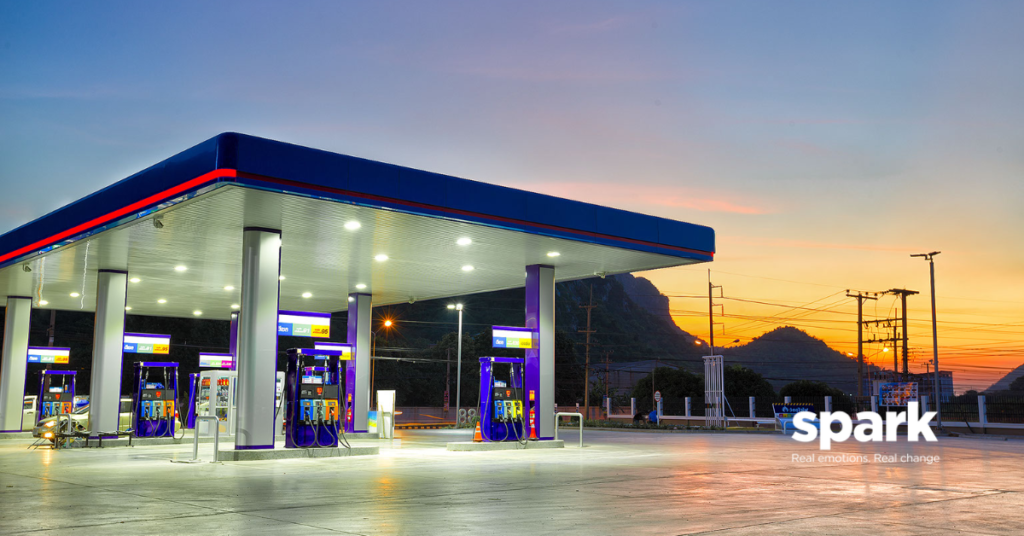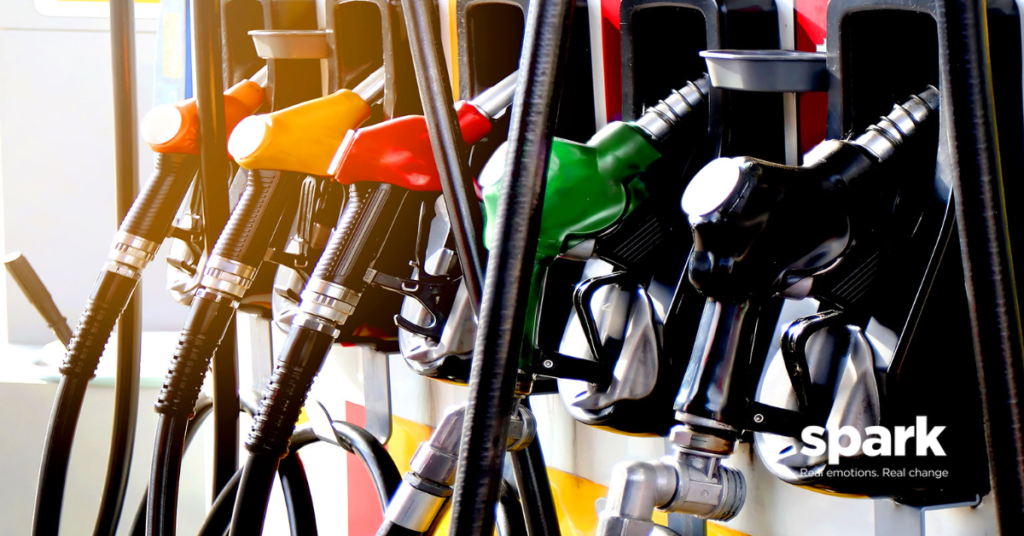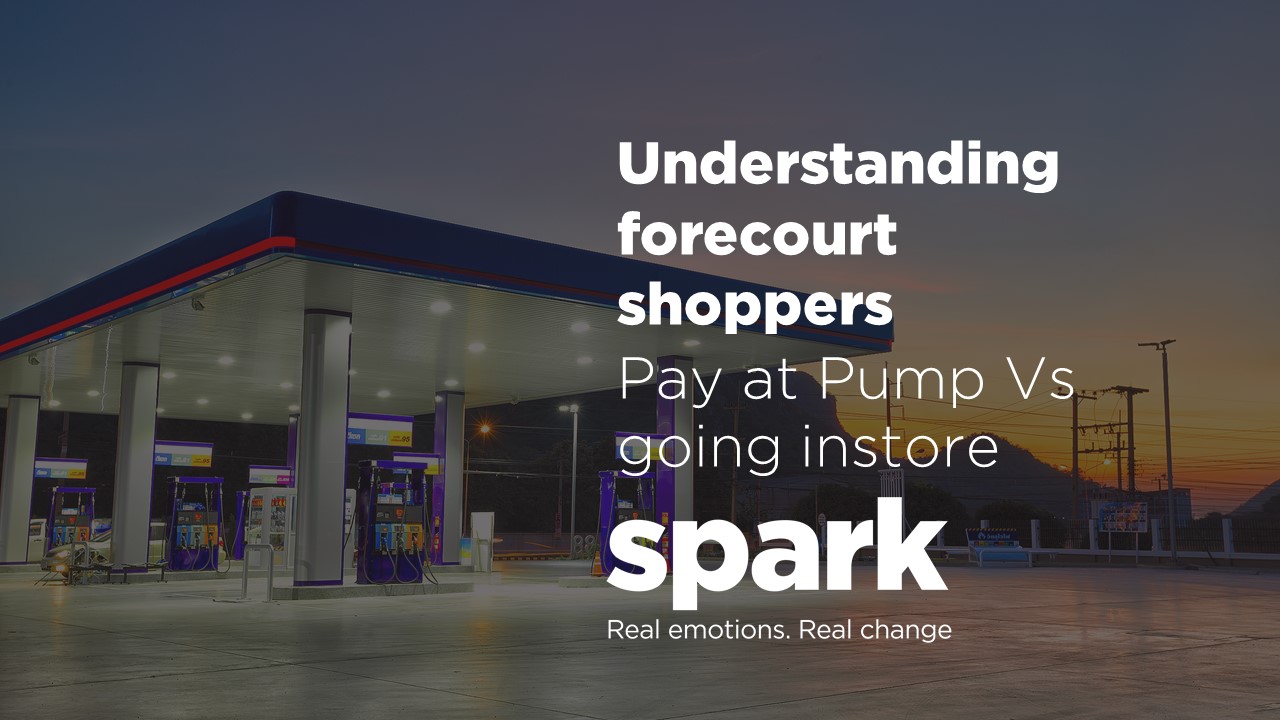Spark Emotions is a specialist market research agency and we are experts in understanding shoppers. We are a team of consumer psychologists and industry leaders that help you to grow your business by understanding the science behind human behaviour. We wanted to share the evolution of petrol stations and understand the psychology behind why shoppers pay at pump or go instore.
The history of the petrol station
In November 1919 Aldermaston in Berkshire became host to the very first filling station opened by The Automobile Association (AA). Motorists would drive to the station and without having to leave the comfort of their own car, they would relax as an attendant would fuel the vehicle and take the money and give change.
Nearly forty years to the day in November 1959, the first service station opened at Watford Gap and food was available as well as petrol… fuel for the motorist and fuel for the car.
In a bid to maximise profits the attendants started to disappear in the 1970s and motorists were coaxed out of their vehicles to fill up their own cars.
To further reduce overheads the first Pay at Pump filling stations opened in the 1980s allowing customers to pay for their fuel with a Debit, Credit or Fuel card meaning they could pay without moving away from their vehicle.
Then, in 2017 – Jaguar and Shell launched the first in-car payment system: The ability to pay via an app.
In nearly one hundred years, the petrol station has evolved from simply selling fuel, to giving us access to a wealth of payment options, shopping and rewards.
Paying at Pump or via the app has done wonders for the fuel industry as the process is now faster, but most importantly, easier. In psychology, we know that humans, and therefore shoppers, nearly always take the path of least resistance.

Simplicity create positive emotions from humans
We like situations and actions which our brains can easily process. This is called cognitive fluency or processing fluency. Being able to pull, fill up, and then complete the payment using a card or through the phone is a simple process and so is cognitively fluent, and so we feel positively about it. Since the friction points (walking over to the kiosk, queuing to pay) are removed, the action can be processed easily and so is more likely to be repeated.
Therefore, it is no surprise that in September 2019, a survey found that 63% of motorists preferred to use the Pay at Pump method if the option was available. It takes less time: from walking to the shop, following the designated route around the store and queuing before craning to see which pump number had been used and no need to leave the car at the mercy of excitable passengers.
With the advent of COVID-19 that percentage is likely to have increased as interaction with fewer people has been sought.
What’s already going on in the market
Couple that self-service format with the various apps available and not only can the fuel be gotten swiftly, receipts can be tracked online and there are rewards too!
Three examples are Shell, BP & Esso:
Shell: Shell Go+ 10% off various drinks, food or motor accessories and money off fuel as the number of visits increase.
BP: BPme Earn points to redeem on a variety of items. For every litre of regular fuel, receive 1 point. 4200 points can result in a Russell Hobbs sandwich maker.
Esso: Esso Nectar turns every litre into 1 point, and 1 point translates to £0.05.
Brand new gifts for the motorist, brand loyalty for the petrol station.

What are the benefits of going in store
What the forecourt store has going for it is convenience. Some are manned 24 hours, 365 days a year. With supermarkets’ 24 hour status on hold due to Covid19, only the petrol stations can sell that emergency 3 a.m. snack. Plus, the motorist can drive to within a few steps from the door and the forecourt roof shields from any adverse weather. Also, variants of the reward schemes can still be utilised in-store.
There is a price tag for this convenience, but the in-store experience is developing. The forecourt store was where the motorist would look to buy shammy leathers and engine oil. Now we can enjoy a delicatessen, even some high-street favourites (M&S currently has 252 Simply Food stores in BP stations across the UK).
We have more choice than ever in how we pay for our fuel: via cash or card, to a machine, a person or via an app. We are even seeing the return of the attendant, which would add a further choice and convenience for those who desire that too.
We can help you drive more sales by getting to the truth of who your customers are, how they feel and behave and what makes them decide to buy or not. If you would like to know more, fill in our contact form and one of the team will be in touch.





